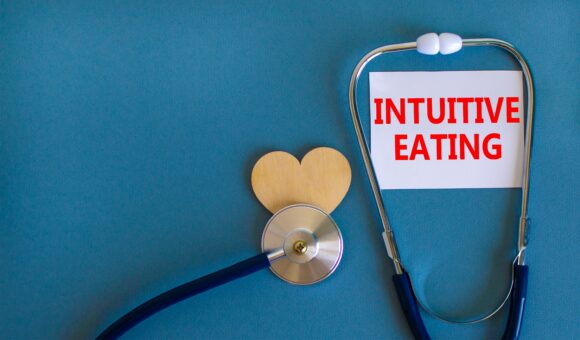Intuitive Eating Principles in Eating Disorder Recovery
Our bodies know what they need. We were all born with an intuition about what we need to survive. Food is essential fuel for our daily activities and our overall well-being. What began as an understanding with our bodies about what they need evolved over time to a disconnect. We may have learned growing up that we must clean our plates. Or maybe media messages about “good” and “bad” foods have influenced eating habits and now hunger cues are off. Certainly the development of an eating disorder causes behaviors around food that are very detrimental to physical health. Is it possible to return to intuitive eating principles in eating disorder recovery?
Moving from Structure to Intuition
At the start of eating disorder recovery, when refeeding must occur and behaviors interrupted, a structured meal plan is essential. This teaches patients how to eat again, following a schedule to help normalize eating patterns. According to Recovery Warriors, patients can still engage intuitive eating while following a meal plan:
- Begin to notice hunger cues. This may be a challenge, because prolonged starvation or purging can disrupt hunger cues. Patients can notice and honor any cues that arise and work with those to identify their bodies’ needs.
- Removing “good” and “bad” from the vocabulary. Intuitive eating means having permission to eat all foods. Patients can work with their treatment teams to identify fearful foods to begin implementing back into the meal plan.
Application in the Treatment Setting
Nutrition plays such an important role in recovery. The body has been traumatized and has to be treated gently and with care. Even with missing hunger cues, patients must eat regularly to weight restore or guard against binging and purging behaviors. Evelyn Tribole, MS, RD, writing for Perspectives, outlines the application of intuitive eating principles in recovery:
- Challenge thoughts and beliefs about food. The eating disorder voice is strong but challenging the judgments around food will help to expand the client’s food choices.
- Cope with emotions! In order to truly mitigate eating disorder behaviors we must be able to identify and cope with emotions without using food to do so.
- Heal body image. Distorted body image is often one of the last eating disorder symptoms to go. Working in therapy to accept and respect the body is key to this process.
- Reintegrating exercise. During refeeding exercise will likely be contraindicated. For people with bulimia or binge eating disorder, learning to exercise in moderation and avoid over-exercise is key to overall well-being.
- Honor health. Every body needs carbohydrates, fats, and a wide variety of food sources to be healthy. Rigid nutritional beliefs are inherent in eating disorders. Challenging these and being open to new foods will begin to foster the variety necessary for health.
If you or a loved one may be struggling with disordered eating habits, please don’t hesitate to reach out to one of our caring counselors today. At Center for Discovery, we offer compassionate support and personalized solutions. Our unique CARE-CFD model helps you incorporate nourishment, satisfaction, food flexibility and collaboration with experts into your daily meals. CARE stands for “consistent attuned relational eating.” It’s a steady, adaptable program that’s designed to fit your specific schedule and events that arise.
Here’s what the CARE-CFD Model embraces:
- Trauma-focused nutrition therapy
- Collaboration between you and the care team
- Responsive to the whole body, including being in tune with the nervous system
- Weight inclusivity
And you’re never alone on your journey to well-being when you’re with us. Once you complete treatment, you’ll have free access to Discovery365™, our exclusive AI-powered app that uses breakthrough technology to intervene when you need extra support.
Believe it or not, you’ve always had the power within yourself to overcome life’s challenges. We’re here to help you learn how to lead a happier, healthier, more authentic life. Contact us today!
Sources
Fowler, L. (2015). 3 Ways to Use Intuitive Eating During Recovery. Recovery Warriors,
Tribole, Evelyn. (2010). Intuitive Eating in the Treatment of Eating Disorders: The Journey of Attunement. Perspectives.
